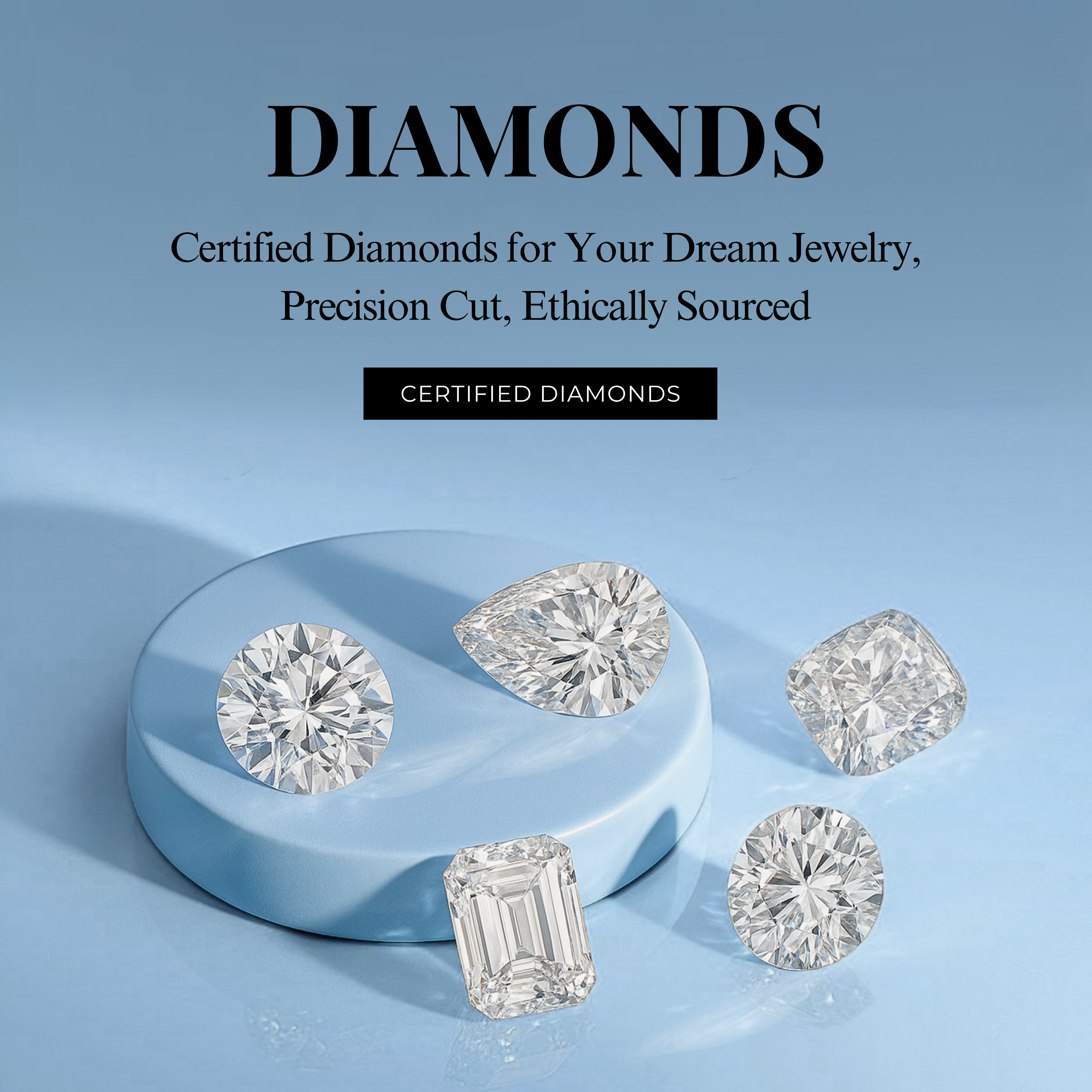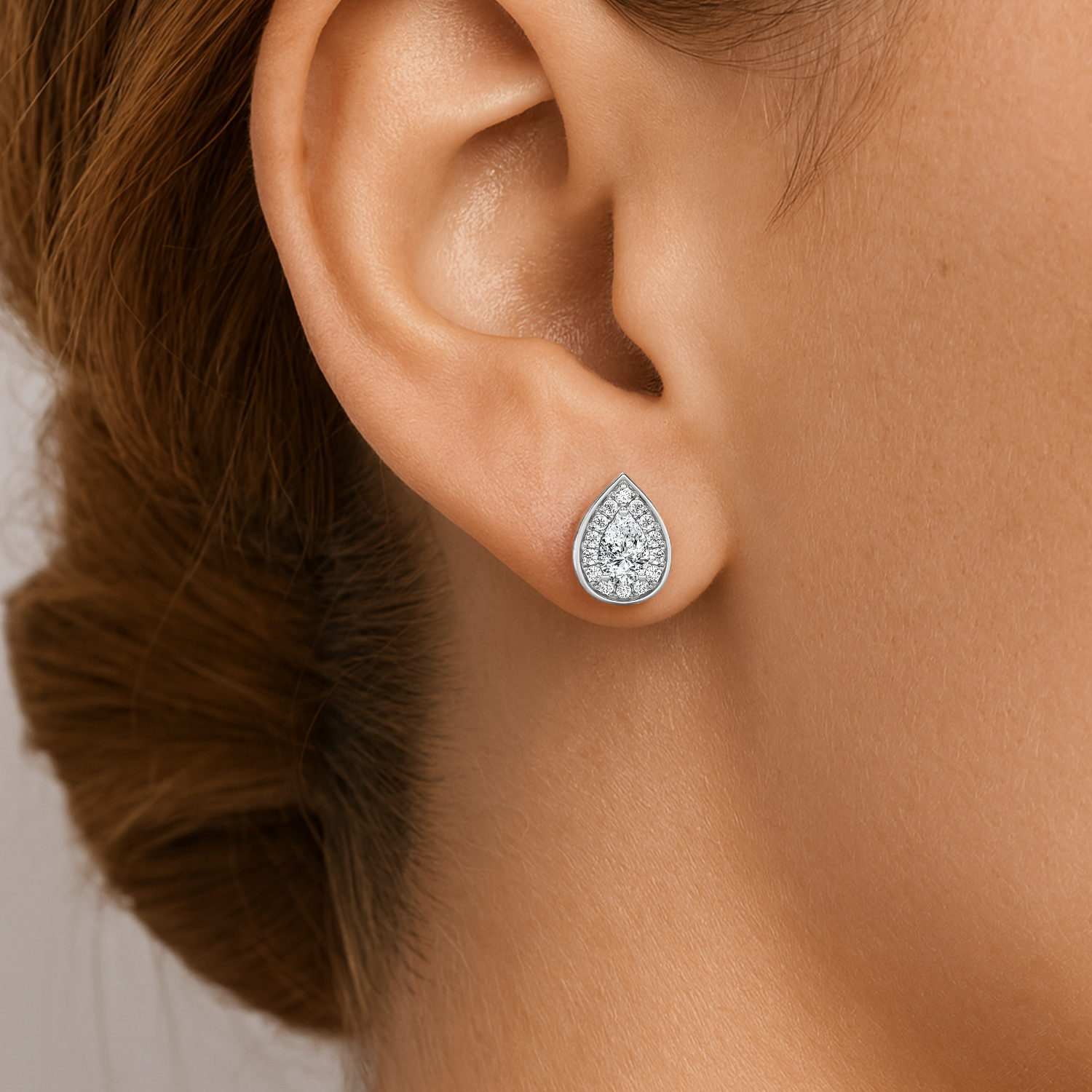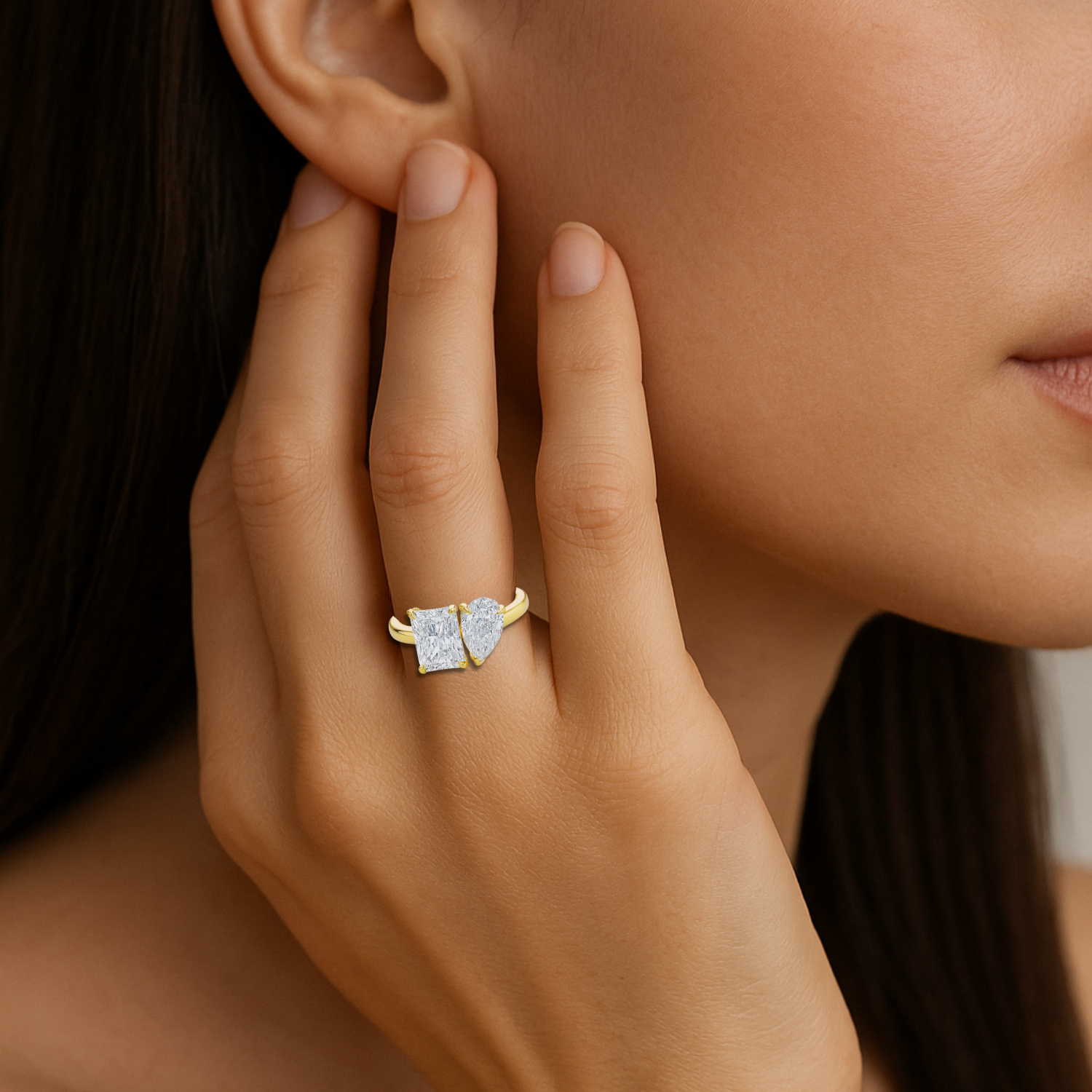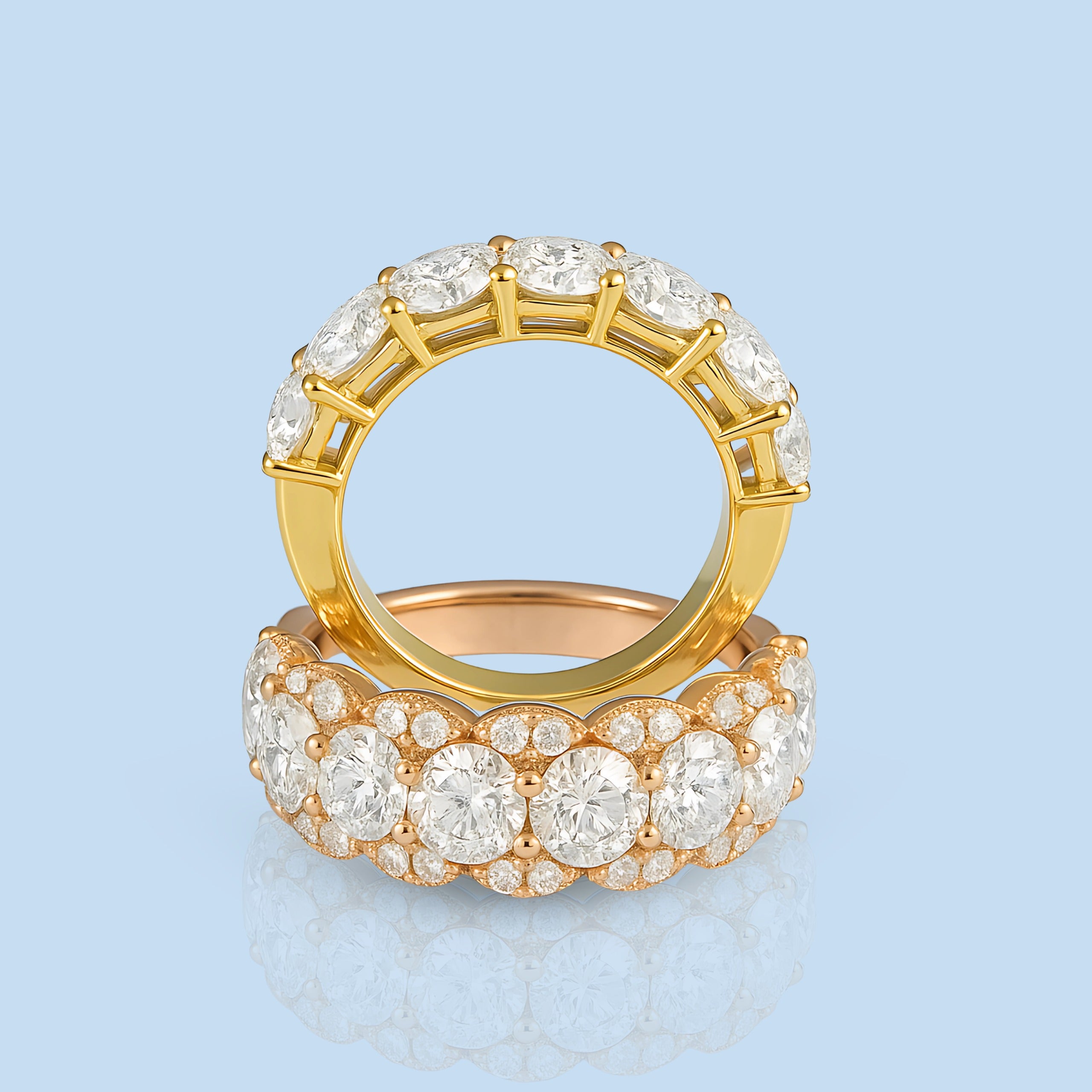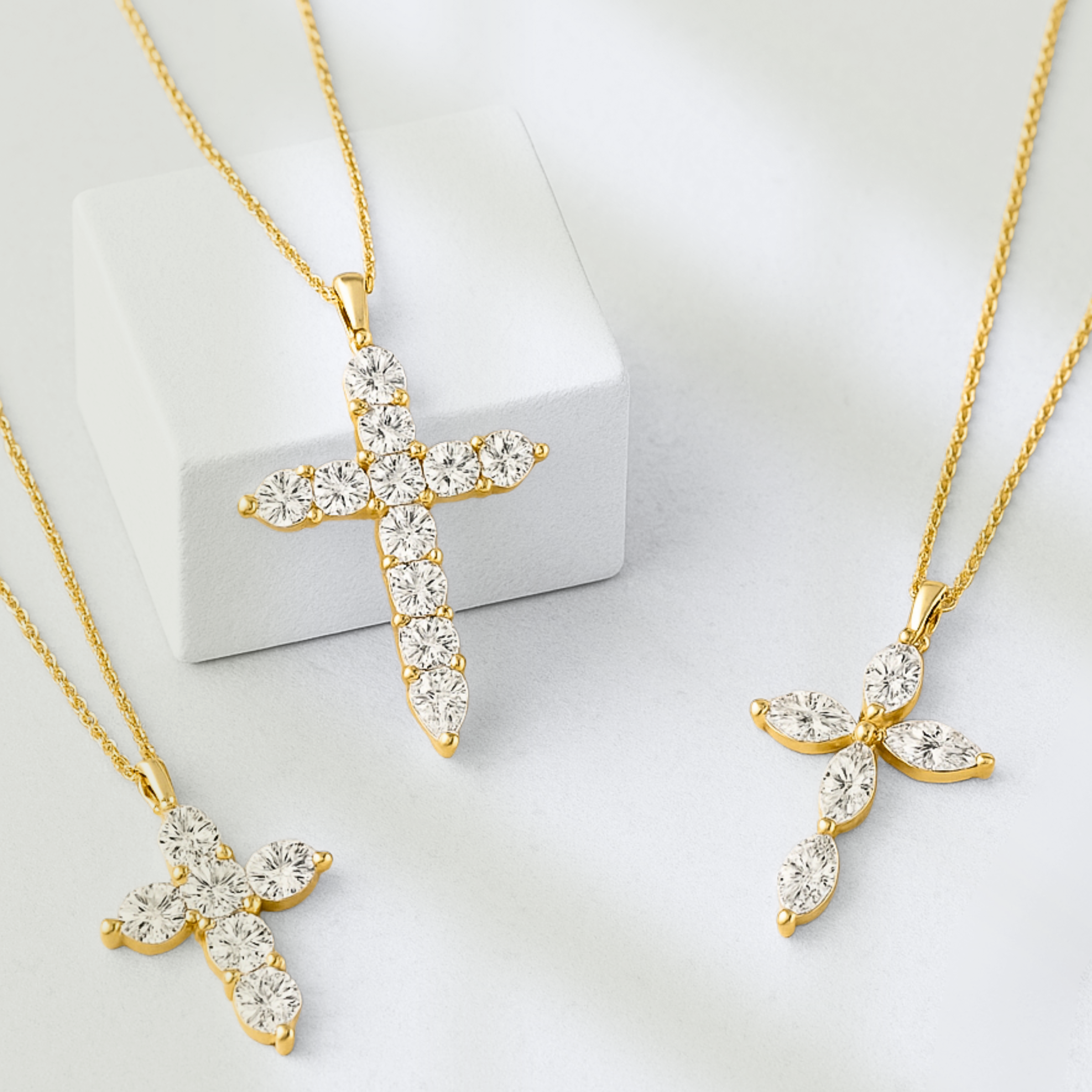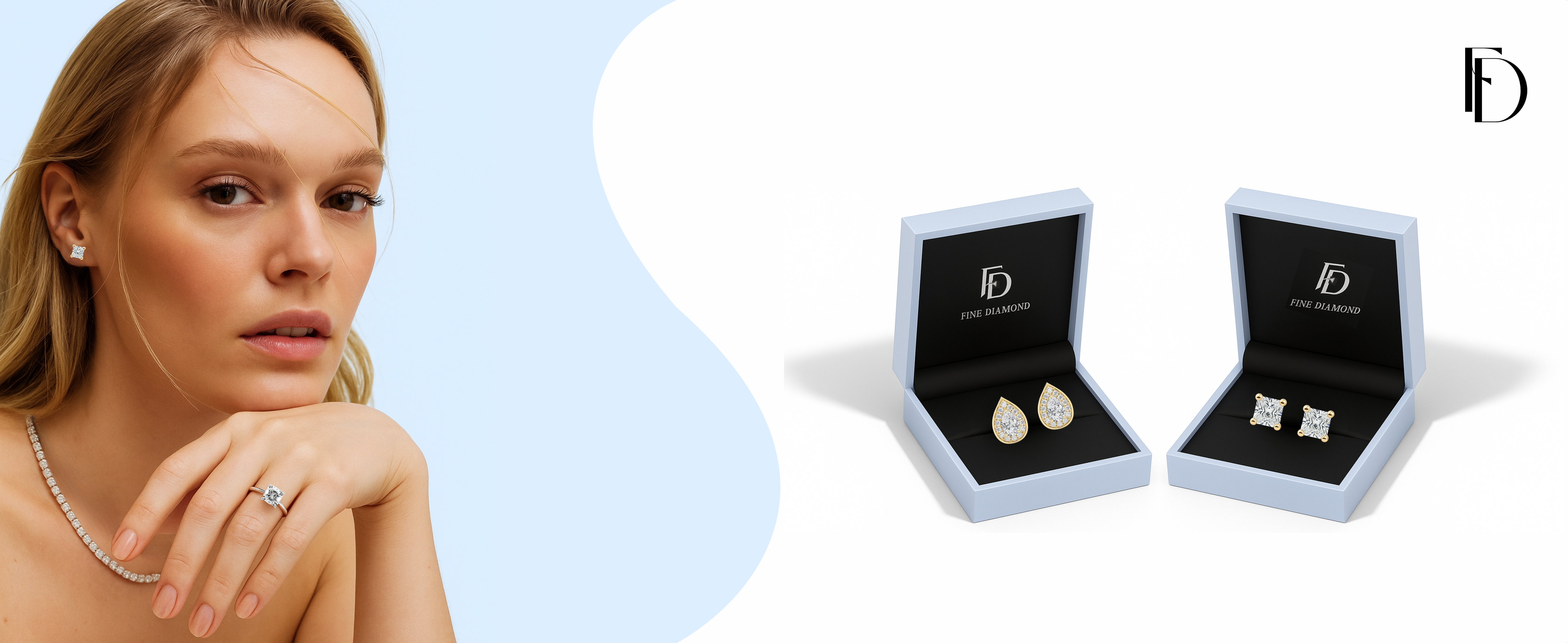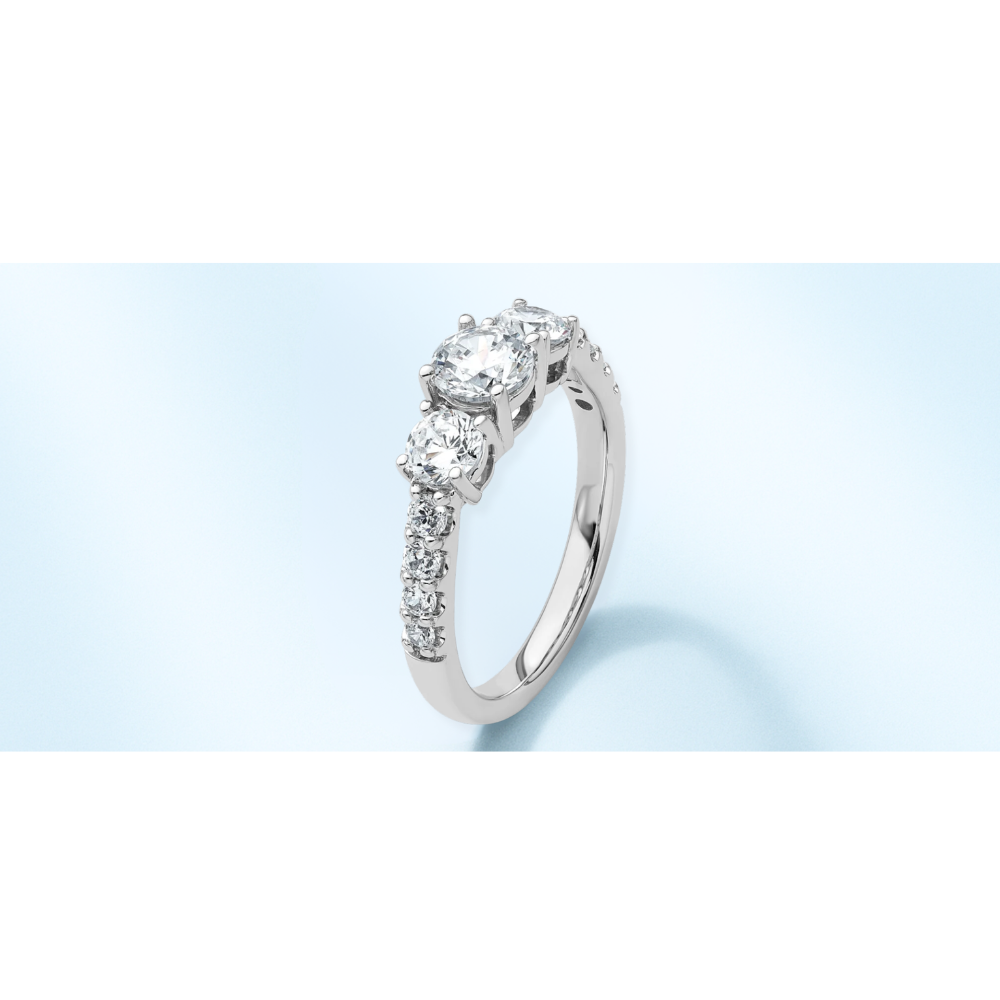
Understanding Diamond Cut of the 4C’s
Before you buy a diamond, you should learn about the 4Cs: Cut, Color, Clarity, and Carat. These four categories provide a universal standard for identifying diamond quality and diamond value.
Each "C" gives a different function of the diamond's beauty:
-
This feature controls how light passes through the stone.
-
Color indicates how much tint/hue it contains.
-
Clarity identifies if the diamond has any natural inclusions.
-
Carat means weight.
By understanding the 4Cs of diamonds, you will be better able to make an informed purchase decision regarding sparkle, purity, and size based on your own preference and budget.
Among all the 4Cs, this factor has the greatest influence on a diamond’s overall beauty. It defines how effectively light travels through the stone and produces sparkle. A diamond's sparkle is not based solely upon weight or clarity; it is a direct result of proportions, symmetry, and polish.
Even a flawless diamond can appear dull if it’s not cut with precision. How the facets are arranged reveals the diamond’s character, turning simple light into breathtaking brilliance.
These three components are the major visual components of a diamond's beauty. The ratio of the cut demonstrates the personality of the diamond while turning simple light into breathtaking beauty.

Do Read: The 4C's of Diamonds
What Diamond Cut Means
-
Diamond cut refers to how precisely the facets of a diamond are shaped, aligned, and polished.
-
It influences how light travels through the stone and how much brilliance it reflects back.
-
The sparkle and apparent size of a diamond are directly tied to the quality of its cut.
-
When proportions are ideal, light is reflected internally and returned through the top, creating exceptional brightness and fire.
Diamond reacts to light in three primary ways when it is cut properly :
-
White light is reflected by brilliance.
-
Fire is the rainbow-colored dispersion of light.
-
Scintillation is the sparkle that appears when the diamond or the observer moves.
A diamond loses brightness and sparkle if it is cut too shallowly or too deeply because light seeps through the sides or bottom.

GIA Cut Grades
Round brilliant diamonds are graded by the Gemological Institute of America (GIA) according to their polish, symmetry, and proportion. Each grade reflects how efficiently light is returned through the top of the diamond.
| GIA Grade | Description |
| Excellent | Highest light reflection and well-balanced proportions. |
| Very Good | Strong reflection with minimal light leakage. |
| Good | Adequate brightness but minor light loss. |
| Fair | Noticeable light leakage and reduced sparkle. |
| Poor | Significant light loss and dull appearance. |

Why Cut Matters
-
A Cut has a greater impact on sparkle and brightness than on color or clarity.
-
It is possible for a well-cut diamond to appear larger than its actual carat weight.
-
Even diamonds with higher carat or clarity grades that are poorly cut seem smaller and less vivid.
-
When choosing a diamond, cut quality should always come first among the four Cs.
Main Elements of a Diamond
Several measurable factors define a diamond’s light performance, influencing how light enters, reflects, and exits the stone.
-
Table Size
-
The diamond's flat top.
-
Having a properly proportioned table will ensure incoming light enters evenly.
-
Depth
-
The distance from the culet (bottom point) to the table.
-
If too deep, light will leak from the sides.
-
If too shallow, it will leak from the bottom.
-
Crown Angle
-
The slope from the girdle to the table.
-
It will change how the light is dispersed into spectral colors.
-
Pavilion Depth
-
The bottom portion that will reflect light.
-
Will ensure the most brilliance if properly cut pavilion angles are used.
-
Polish and Symmetry
-
Will check the accuracy of the facet alignment.
-
Having better symmetry will often improve the balance and the return of light into the diamond

Also read: How Lab-Grown Diamonds Are Made
Impact of Cut on Size Appearance
Compared to a poorly finished stone of the same carat weight, one with excellent proportions reflects more light and looks larger.
Shallow or deep cuts can conceal weight in places not visible from above.
As an illustration, a 1-carat A 1.2-carat diamond may appear smaller than an excellent cut diamond. Strong light performance results in greater brilliance and fire.

Cut vs. Shape
Cut and shape are often used interchangeably; however, they have their own definitions:
- Cut - Describes the quality of the diamond's proportions, symmetry, and polish.
- Shape - Refers to the outline or physical shape: round, oval, pear, princess, etc.
The Round Brilliant is the most standard cut with strict GIA grading. Other shapes or fancy cuts (oval, emerald, cushion, etc.) do not follow a standard delivery schedule and have different proportions.

How GIA Determines Cut Grades
GIA considers a combination of measurable factors to assign a cut grade:
-
Proportions: Ratios of table, depth, and angles.
-
Symmetry: Facet alignment.
-
Polish: The smoothness of the surface.
-
Brightness: The return of white light.
-
Fire: Dispersion of color.
-
Scintillation: A pattern of reflections of light and dark.
Every grade is the outcome of examining how these components interact in viewing angles and lighting scenarios.

Must Read: Why Jewelry Lovers Are Turning to Ethical and Sustainable Lab-Grown Diamonds
Choosing the Right Diamond
When selecting a diamond:
-
Put Cut Grade First: For maximum brilliance, select Excellent or Very Good.
-
Examine Proportions: Light return is influenced by depth and table percentages.
-
Verify the polish and symmetry: Even minor asymmetries can impair light performance.
-
Balance your budget by making a small concession on clarity or color instead of cut.
-
Compare in Lighting: To see true brilliance, view in different lighting conditions.
If you’re working within a budget, choosing a slightly lower color or clarity grade with an Excellent cut is often the best value-for-money decision.

Final Takeaway
A Cut quality defines a diamond’s beauty and sparkle. The cut describes how light travels through the stone and how the color appears to the naked eye.
The Cut has the most impact on sparkle, symmetry, and visual brilliance, and typically will outweigh higher color or clarity grades when assessing diamonds.
Want to deepen your understanding of diamond cuts and grading?
Join the Fine Diamonds Newsletter for expert diamond insights, buying guides, and care tips.


 Round
Round  Marquise
Marquise  Asscher
Asscher  Princess
Princess  Cushion
Cushion  Pear
Pear  Heart
Heart  Emerald
Emerald  Oval
Oval  Radiant
Radiant 